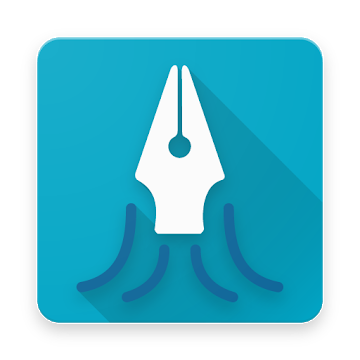ChromeOS の新機能で評価を引き上げた Squid
コレクションでコンテンツを整理
必要に応じて、コンテンツの保存と分類を行います。

Squid を使用すると、ユーザーはさまざまなデバイスで自然に手書きのメモを取ることができます。Squid では、アクティブペン、パッシブ タッチペン、または指を使って、紙に書くのと同じように書くことができます。また、PDF を簡単にマークアップしてフォームに記入したり、論文の編集や答案の採点を行ったり、ドキュメントに署名したりできます。
Squid は元々、Android Honeycomb がリリースされたときに、アクティブペンを搭載したタブレット用に設計されたアプリです。Android アプリを実行するアクティブペン対応の最新の ChromeOS デバイスは、基本的にはユーザーが求めていたハードウェアであるため、最適化する選択を簡単に選択できました。
Eyecon の取り組み
Squid は当初から大画面デバイス向けに構築されていましたが、ChromeOS 向けに最適化するには、いくつかの領域に注力する必要があります。また、キーボード ショートカット、ナビゲーション、ダイアログを閉じる際に Enter キーを押す操作など、キーボードのサポートが強化されました。これは自然な動作です。また、トラックパッドによるスクロール(これは、ユーザーが Squid でメモを確認する際に役立ちます)とシステム クリップボードに対するサポートを追加しました。
最も有益な取り組みは、低遅延のタッチペン API に対するサポートを追加したことです。これにより、Squid の中核となるエクスペリエンスが大幅に改善されました。Squid は手書きのメモを取るためのアプリであるため、タッチペンの統合は極めて重要です。これは、アクティブペンの方がはるかに書き心地が自然なためです。Squid のユーザーは、遅延のない滑らかな書き心地になったことに驚いています。低遅延のサポートにより、インクがペンから出ているように感じられます。
結果
Squid のユーザーはアプリを絶賛しています。Chromebooks での累計平均評価は 4.6☆ で、全デバイスの平均評価よりも 8.5% 高くなっています。過去 30 日間、Chromebooks は、Squid が有効になっているデバイスの 7% 以上を占め、収益の 21% をも占めていました。
また、学校の授業で Squid が採用され始めており、2018 年には、教育用に開発された、アクティブペン対応の新しい Chromebooks の充実したラインナップによってこの流れがさらに加速することが期待されています。
始める
ChromeOS 用にアプリを最適化するの最適な方法をご覧ください。
このページのコンテンツやコードサンプルは、コンテンツ ライセンスに記載のライセンスに従います。Java および OpenJDK は Oracle および関連会社の商標または登録商標です。
最終更新日 2018-05-03 UTC。
[[["わかりやすい","easyToUnderstand","thumb-up"],["問題の解決に役立った","solvedMyProblem","thumb-up"],["その他","otherUp","thumb-up"]],[["必要な情報がない","missingTheInformationINeed","thumb-down"],["複雑すぎる / 手順が多すぎる","tooComplicatedTooManySteps","thumb-down"],["最新ではない","outOfDate","thumb-down"],["翻訳に関する問題","translationIssue","thumb-down"],["サンプル / コードに問題がある","samplesCodeIssue","thumb-down"],["その他","otherDown","thumb-down"]],["最終更新日 2018-05-03 UTC。"],[],[],null,["# Squid boosts their rating with new features in ChromeOS\n\n[Squid](https://play.google.com/store/apps/details?id=com.steadfastinnovation.android.projectpapyrus)\nallows users to take handwritten notes naturally on various devices. With Squid\nyou can write just like you would on paper using an active pen, passive stylus,\nor your finger and easily mark up PDFs to fill out forms, edit/grade papers, or\nsign documents.\n\nSquid was originally designed for tablets with active pens back\nwhen Android Honeycomb was released. The latest ChromeOS devices with active\npen support that run Android apps are essentially the hardware they've been\nwaiting for, so it was easy for them to make the choice to optimize.\n\nWhat they did\n-------------\n\nSquid was built for large screen devices from the beginning, but there were a\nfew areas they needed to focus on to optimize for ChromeOS. They added better\nsupport for the keyboard with keyboard shortcuts, navigation, and making sure\nhitting the \"Enter\" key closed dialogs where you would expect this to be the\nnatural behavior. They also added support for trackpad scrolling, which is\nhelpful when users are reviewing a note in Squid, and support for the system\nclipboard.\n\nThe biggest and most beneficial effort was adding support for the low latency\nstylus API, which drastically improved the core experience of Squid. Since Squid\nis a handwritten note-taking app, stylus integration is extremely important\nbecause an active pen provides a much more natural writing experience. Squid\nusers are astonished at how fluid and lag-free writing is now. With low-latency\nsupport, the ink finally feels like it's coming out of the pen.\n\nResults\n-------\n\nSquid users have given the app rave reviews. The cumulative average rating on\nChromebooks is 4.6☆, which is 8.5% higher than their average rating across all\ndevices. Over the last 30 days, Chromebooks have accounted for over 7% of\nSquid's active devices and a significant 21% of their revenue!\n\nThey've also had schools start adopting Squid in the classroom, and are hoping\nto expand this further in 2018 with the great lineup of new active pen-enabled\nChromebooks built for education.\n\nGet started\n-----------\n\nLearn how to best\n[optimize your apps for ChromeOS](/topic/arc/optimizing)."]]


